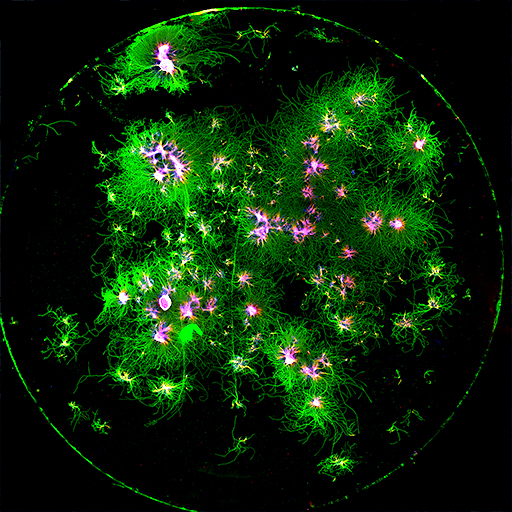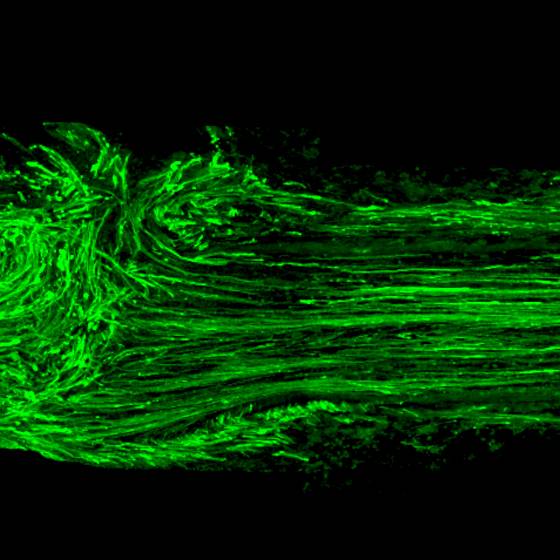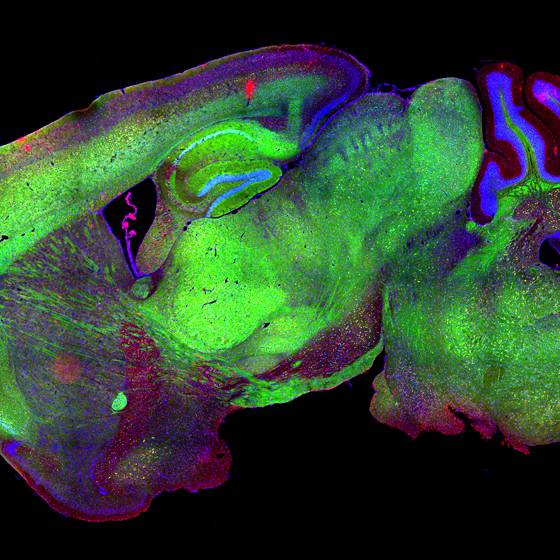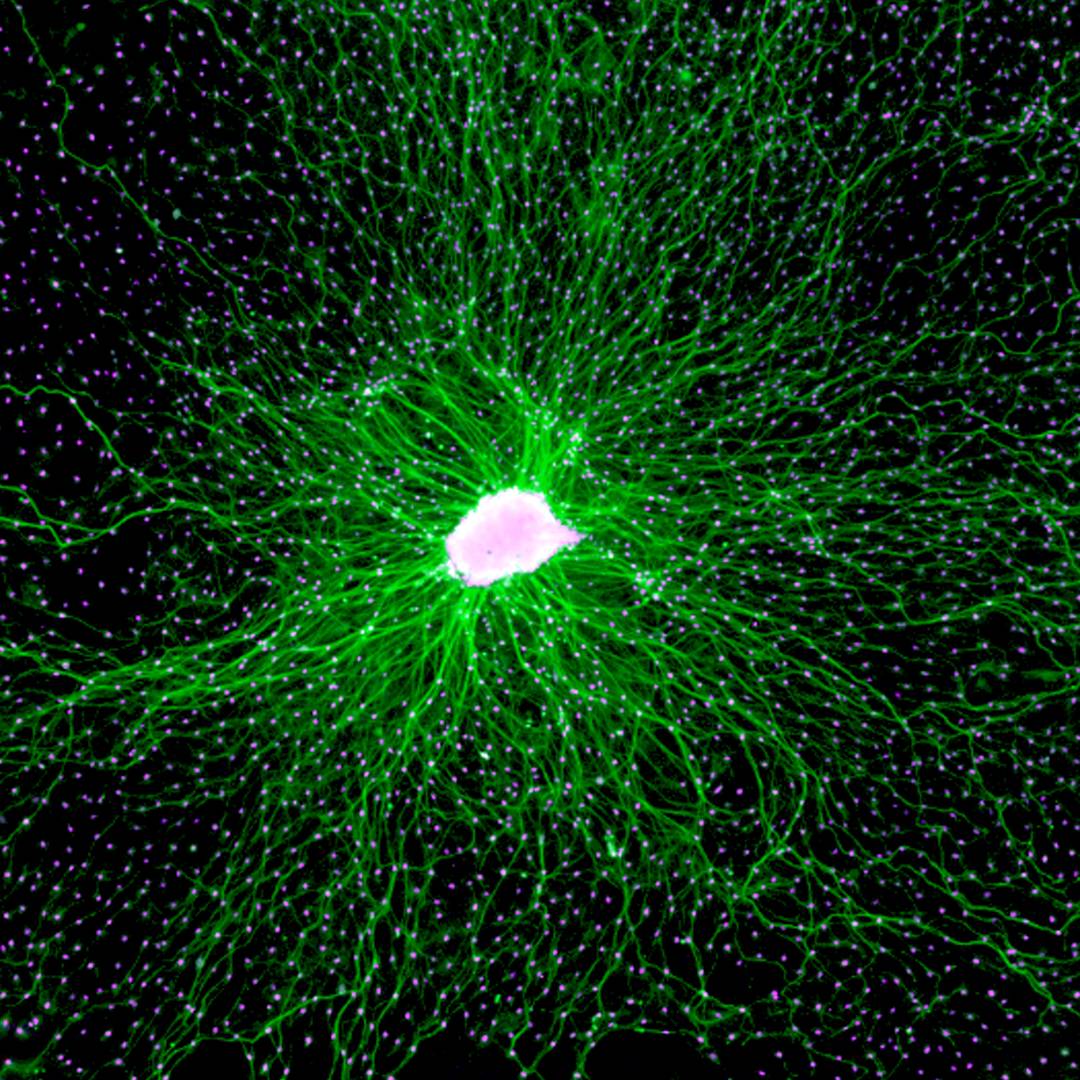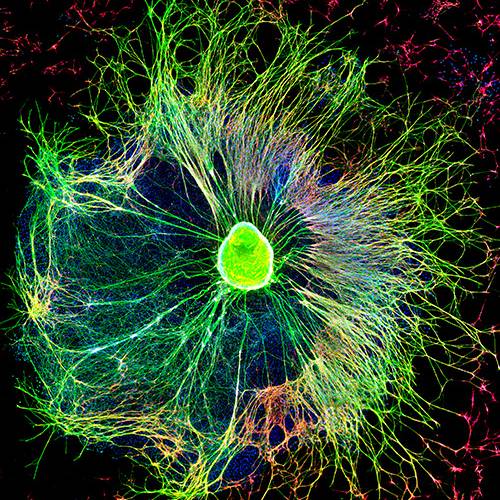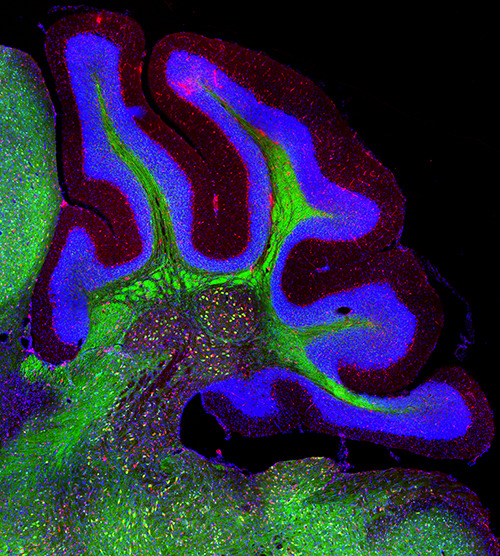Schwann cell regulation of axonal regeneration
In the mammalian nervous system, the regenerative capabilities of neurons show regional variability. In the peripheral nervous system (PNS), axons efficiently regenerate after nerve damage associated to the pro-regenerative effect of Schwann cells. In contrast, in the central nervous system the regenerative capability is poor due to both neuronal intrinsic limitations and glial responses that restrict regeneration. Although, axonal regeneration in the periphery show good regenerative capacity in preclinical models, it still represents a clinical problem associated to delayed repair of peripheral nerves, and the negative effects of aging and other conditions, including diabetes, for axonal regeneration and functional recovery. In the lab, we study how Schwann cells reprogramming regulates axonal regeneration after nerve damage, in order to manipulate this response to enhance axonal regeneration.
Longitudinal section of a sciatic nerve, with regenerating axons crossing a surgically repaired region, axons are labelled using an antibody against the protein SCG10.

Schwann cell exosomes enhance axonal regeneration
In the peripheral nervous system, regeneration of injured axons depends on the reprogramming of Schwann cell from a differentiated phenotype into a phenotype known as repair Schwann cells. Our lab was the first to demonstrate that Schwann cell exosomes enhanced axonal regeneration in vitro and in vivo in laboratory animals, an effect we later showed was dependent on the reprogramming of Schwann cells into a repair phenotype, and associated with the loading of specific miRNA into exosomes and their transfer to axons. In addition, we are exploring the effects of aging, chronic denervation and diabetes in Schwann cell reprograming and axonal regeneration, in order to develop interventions to enhance axonal regeneration in these conditions.
People involved

Daniela Rebolledo
Senior Research Assistant

I am a Biochemist from Pontificia Universidad Católica de Chile (PUC) and PhD in Cell and Molecular Biology from the same university. My PhD thesis research was performed at the Physiology and Biophysics department, University of Washington. My research has focused on the physiology of the neuromuscular system and the pathological mechanisms behind neuromuscular disorders of diverse etiology.

Karina Girardi do Carmo
Postdoctoral fellow

Biologist, Ph.D., and MSc in Cell and Molecular Biology from Oswaldo Cruz Foundation (Fiocruz/RJ). Studying age-dependent decline of regenerative capacity in the peripheral nervous system. Mainly focusing on the contribution of metabolic profile of aging Schwann cells in senescence and particularly exploring the epithelial-mesenchymal transition (EMT) like process.
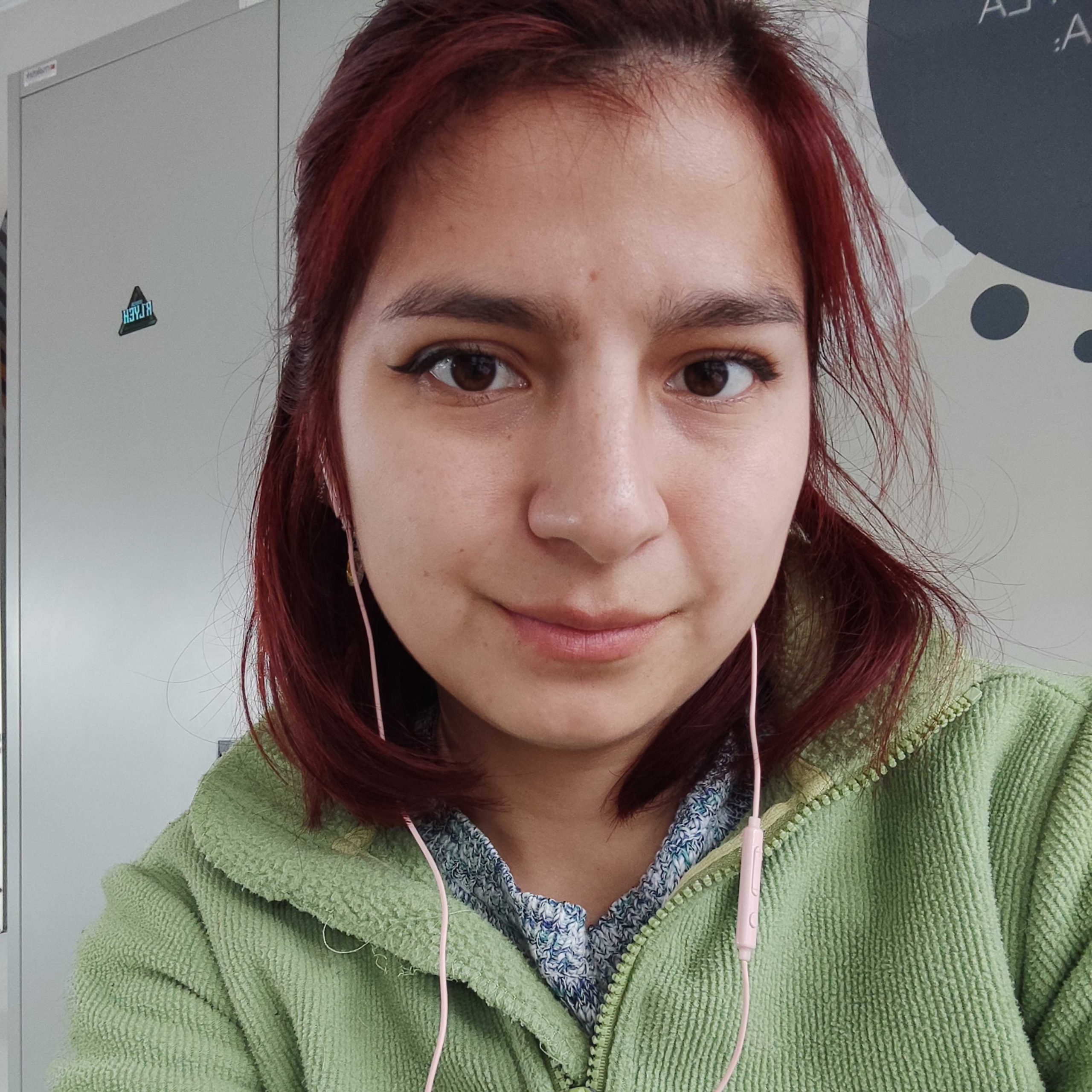
Renata Gallardo
Research Assistant

I studied Medical Technology at the Universidad Mayor acquiring knowledge in histological techniques, immunohistochemistry and immunofluorescence. I am interested in learning more from the world of neurosciences and related pathologies to find new treatments to improve the quality of life in aging.
Related Publications
PUBLICATIONSDataNervous System FxPNS
octubre 4, 2021
MMP2-9 Cleavage of dystroglycan alters the size and molecular composition of Schwann cell domains.
Court FA, Zambroni D, Pavoni E, Colombelli C, Baragli C, Figlia G, Sorokin L, Ching W, Salzer JL, Wrabetz L, Feltri ML.
J Neurosci. 2011 Aug 24;31(34):12208-17. doi: 10.1523/JNEUROSCI.0141-11.2011.
PMID: 21865464
octubre 4, 2021
BAX inhibitor-1 regulates autophagy by controlling the IRE1α branch of the unfolded protein response.
Castillo K, Rojas-Rivera D, Lisbona F, Caballero B, Nassif M, Court FA, Schuck S, Ibar C, Walter P, Sierralta J, Glavic A, Hetz C.
EMBO J. 2011 Sep 16;30(21):4465-78. doi: 10.1038/emboj.2011.318.
PMID: 21926971
octubre 4, 2021
XBP-1 deficiency in the nervous system protects against amyotrophic lateral sclerosis by increasing autophagy
Hetz C, Thielen P, Matus S, Nassif M, Court F, Kiffin R, Martinez G, Cuervo AM, Brown RH, Glimcher LH.
Genes Dev. 2009 Oct 1;23(19):2294-306. doi: 10.1101/gad.1830709. Epub 2009 Sep 17.
PMID: 19762508
PUBLICATIONSDataNervous System FxPNS
octubre 4, 2021
A laminin-2, dystroglycan, utrophin axis is required for compartmentalization and elongation of myelin segments.
Court FA, Hewitt JE, Davies K, Patton BL, Uncini A, Wrabetz L, Feltri ML.
J Neurosci. 2009 Mar 25;29(12):3908-19. doi: 10.1523/JNEUROSCI.5672-08.2009.
PMID: 19321787
Related News
Científicos U. Mayor lideran equipo que logró mejorar la memoria de un modelo animal de Alzheimer
abril 14, 2022
Cerebro visto mediante microscopía de fluorescencia. Crédito: Macarena Arrazola, Centro de Biología Integrativa Universidad Mayor. Investigadores de Chile, España y EE.UU, encabezados por el Dr.…
Investigadores jóvenes de la Universidad Mayor se adjudican 13 nuevos proyectos FONDECYT
enero 17, 2022
La Agencia Nacional de Investigación y Desarrollo (ANID) dio a conocer los resultados de los concursos Fondecyt Iniciación y Fondecyt Postdoctorado 2022 en los que la U. Mayor consiguió…




